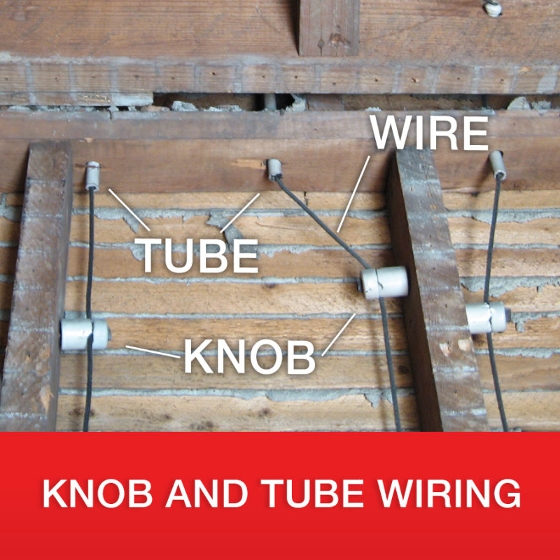Knob and tube wiring, also known as open wiring, was used in homes in Canada for almost 50 years, starting in the early 1900s. Parts are still available for maintenance purposes. Knob and tube wiring that was installed properly can provide many more years of service.
The issue starts with changing lifestyles. Most old homes do not have as many electrical circuits as a new one. To get around this, some homeowners have installed additional outlets or new circuits and tied it into the old wiring, rather than starting a new circuit at the electrical panel.
Some problems also occur because if a circuit became overtaxed and 15 amp fuses were constantly blowing, homeowners put in 25 or 30 amp fuses to stop the problem. Having 25 or 30 amps in a wire not designed to handle it causes the wire to overheat. The wire and the insulation become brittle, and that is when the safety issues begin.
Some homeowners also did their own renovations, adding outlets but connecting them into the old wiring without making proper connections.
"Knob and tube wiring, on its own, is not inherently a problem."
Knob and tube wiring, on its own, is not inherently a problem. Some argue it does not have a ground conductor, but that is true of any wiring installed between 1950 and 1960. The ground conductor - or "third prong" - is necessary if you are plugging in appliances that have a 3- prong plug. If the knob and tube wiring is restricted to rooms without major appliances, this creates no special hazard.
"Some insurance companies may ask for a specific electrical contractor report."
If the home involved in your transaction has knob and tube wiring, it is recommended that you follow these guidelines:
- Have a qualified electrical contractor check the knob and tube conductors for sign of deterioration and damage. Some insurance companies may ask for a specific electrical contractor report.
- The general inspection report will also identify visible electrical safety concerns in the electrical wiring.
- Knob and tube conductors should be replaced where exposed conductors show evidence of mechanical abuse and or deterioration, poor connections, overheating, or alterations that could result in overloading.

- Article from CREA, The Canadian Real Estate Association








